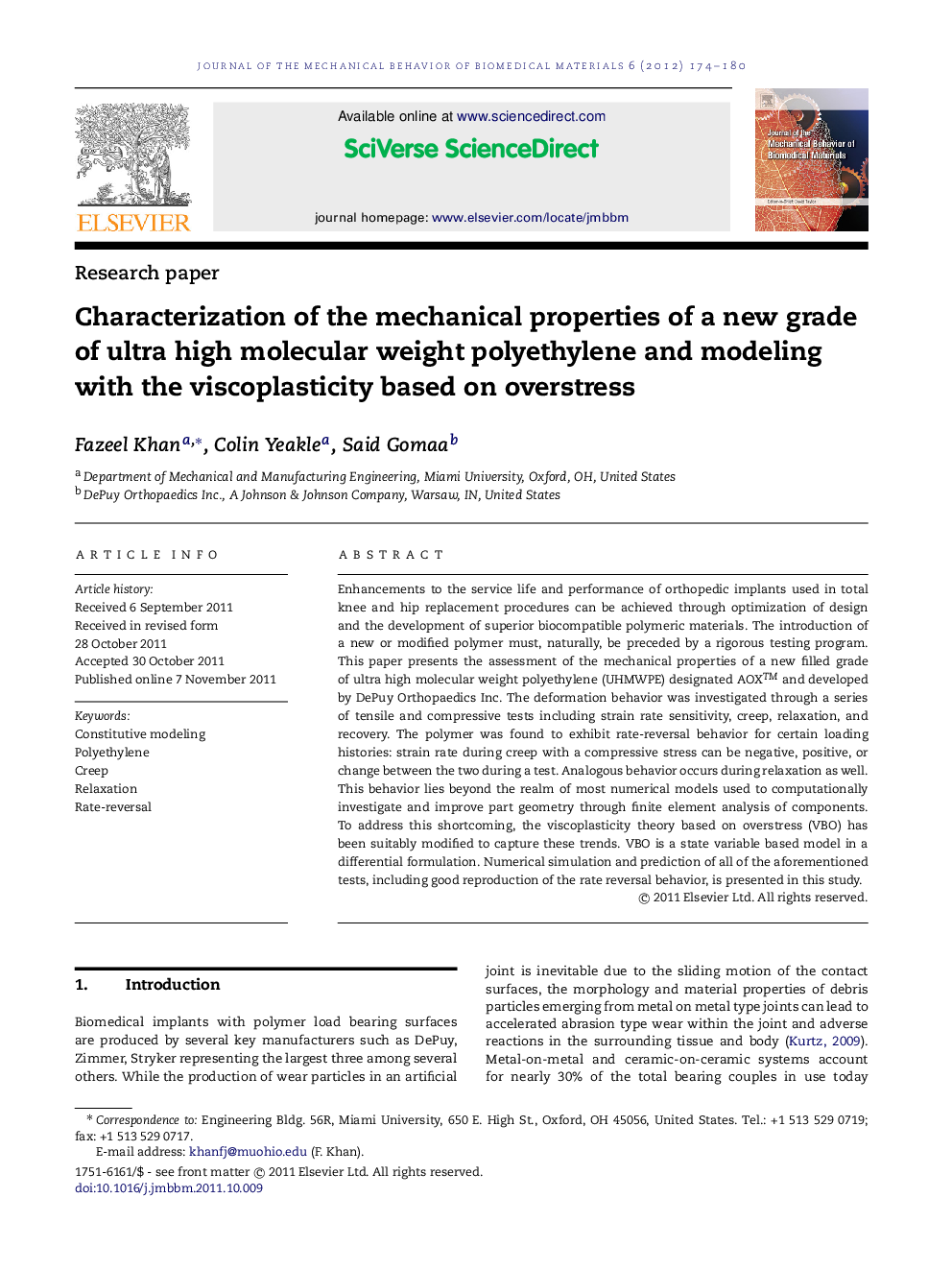| Article ID | Journal | Published Year | Pages | File Type |
|---|---|---|---|---|
| 811264 | Journal of the Mechanical Behavior of Biomedical Materials | 2012 | 7 Pages |
Enhancements to the service life and performance of orthopedic implants used in total knee and hip replacement procedures can be achieved through optimization of design and the development of superior biocompatible polymeric materials. The introduction of a new or modified polymer must, naturally, be preceded by a rigorous testing program. This paper presents the assessment of the mechanical properties of a new filled grade of ultra high molecular weight polyethylene (UHMWPE) designated AOXTMTM and developed by DePuy Orthopaedics Inc. The deformation behavior was investigated through a series of tensile and compressive tests including strain rate sensitivity, creep, relaxation, and recovery. The polymer was found to exhibit rate-reversal behavior for certain loading histories: strain rate during creep with a compressive stress can be negative, positive, or change between the two during a test. Analogous behavior occurs during relaxation as well. This behavior lies beyond the realm of most numerical models used to computationally investigate and improve part geometry through finite element analysis of components. To address this shortcoming, the viscoplasticity theory based on overstress (VBO) has been suitably modified to capture these trends. VBO is a state variable based model in a differential formulation. Numerical simulation and prediction of all of the aforementioned tests, including good reproduction of the rate reversal behavior, is presented in this study.
Graphical abstractFigure optionsDownload full-size imageDownload high-quality image (728 K)Download as PowerPoint slideHighlights► Tensile and compression tests on a new biomedical grade of UHMWPE. ► The loading rate affects the stress–strain, creep, and relaxation response. ► The material also exhibited rate reversal in creep and relaxation tests. ► The viscoplasticity theory based on overstress (VBO) simulated deformation phenomenon.
